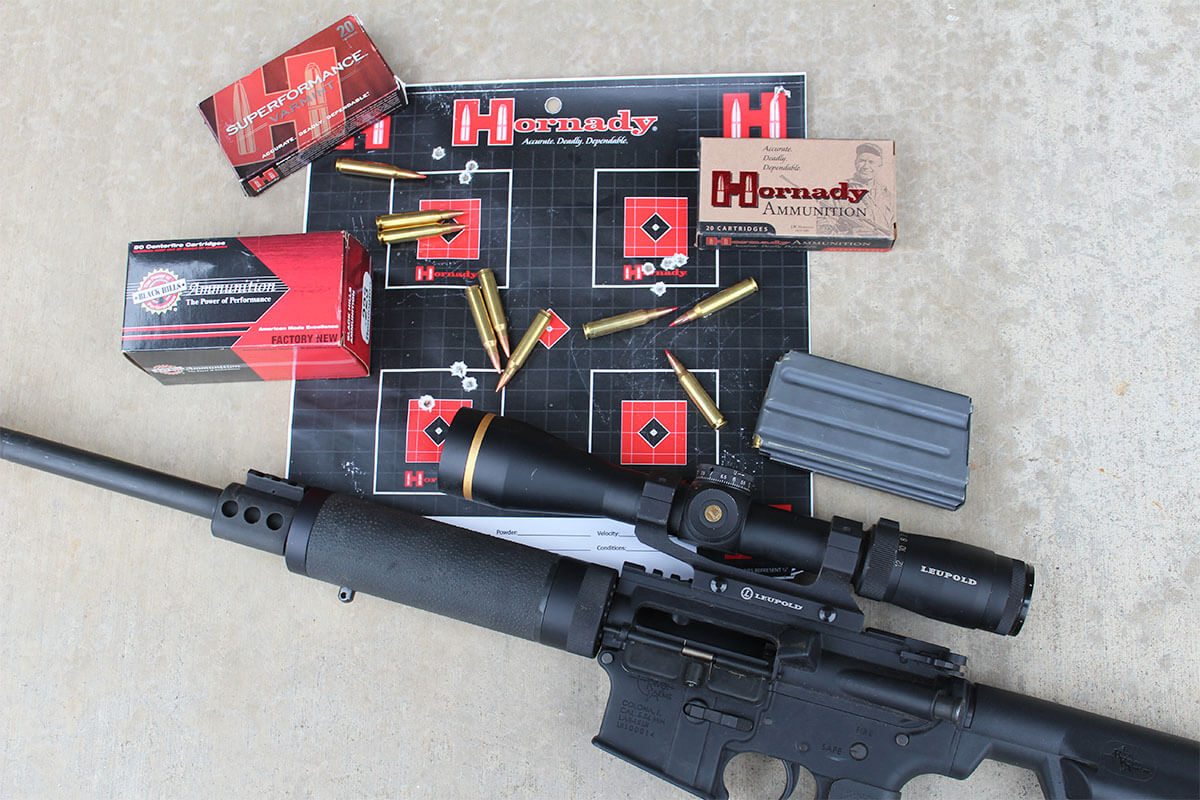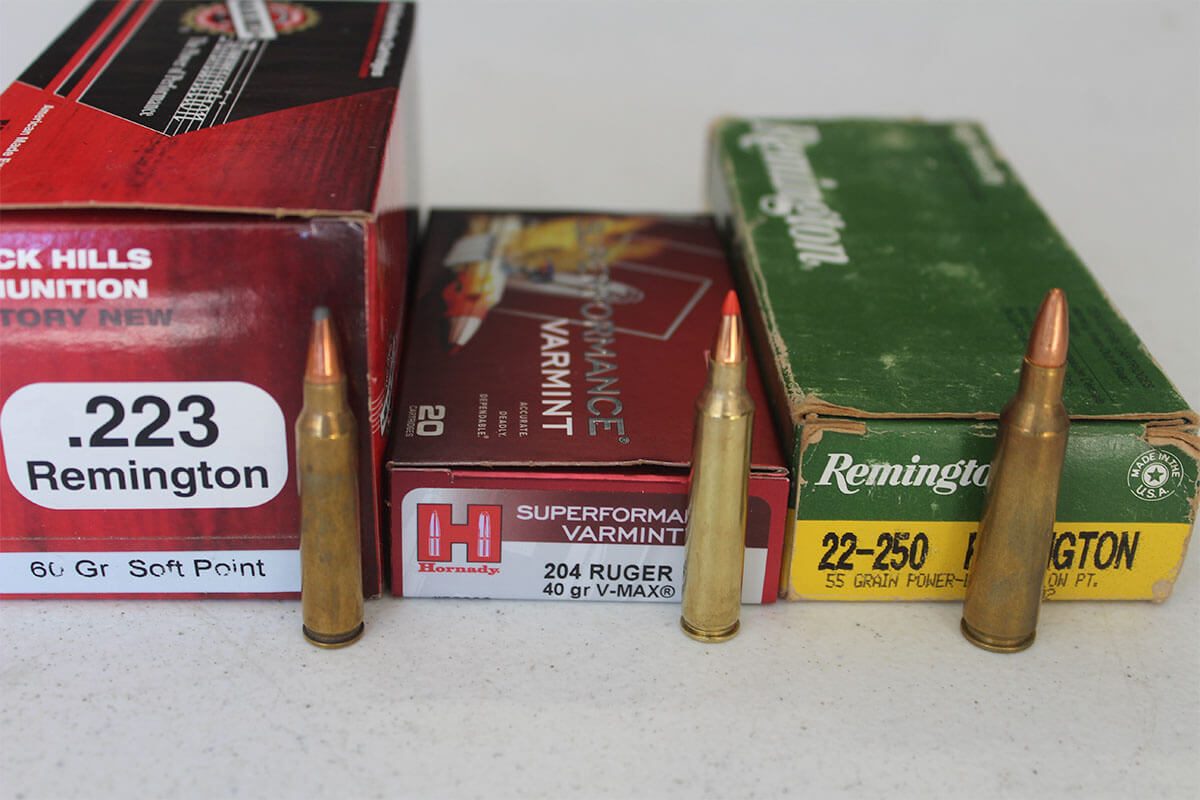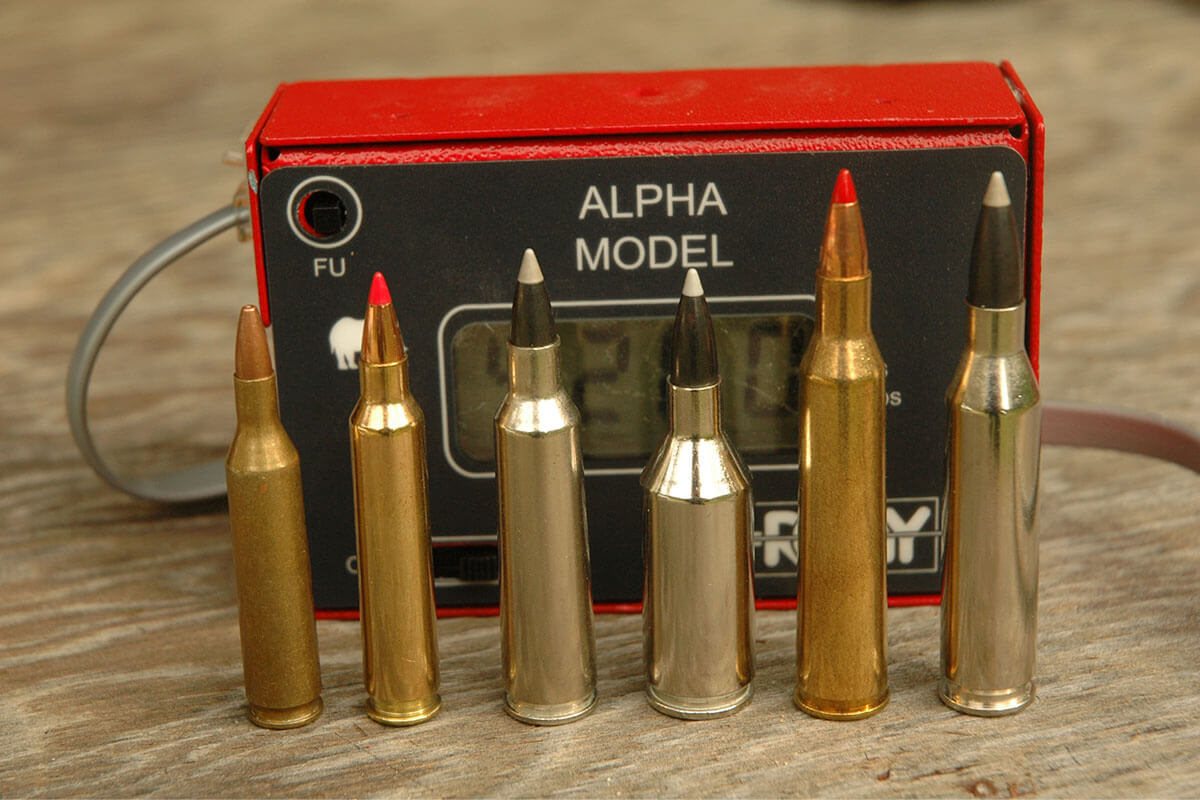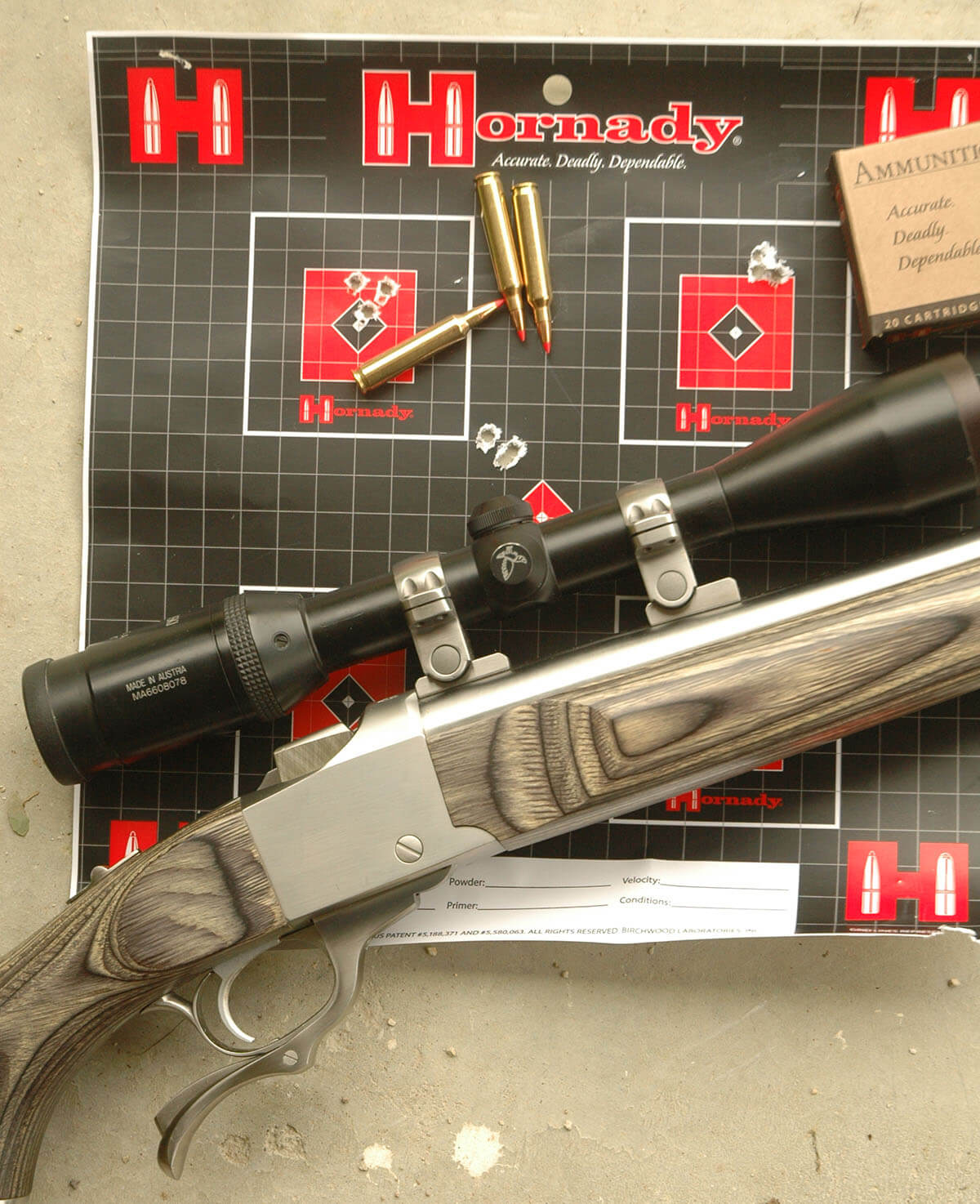
The AR-15 has made the .223 Rem. cartridge one of our most popular rounds and certainly a top varmint pick. This left-hand Rock River is one of Boddington’s favorites. (Image courtesy of Craig Boddington)
The class of small-caliber, fast and accurate rounds that we call “varmint cartridges” came into being about a century ago. This was a time when American big game populations were at their lowest ebb. Even deer had become scarce in much of the country. In my home state of Kansas, whitetails were considered extinct by 1925. Hunters will hunt, and tend to pursue game that is most available closest to home. Before WWII, for many the most available game animals were small game and what we now think of as “varmints.”
In a time of much different farming practices, it was largely Eastern woodchuck hunters who created the “varmint cartridge.” Then, as now, the .22 rimfire was unbeatable for cottontails and squirrels, but they needed more reach and power for woodchucks and other medium-size pests.

Several of our current factory varmint cartridges date to this era. The .22 Hornet was wildcatted in the 1920s and introduced by Winchester in 1930. The .220 Swift, also a Winchester cartridge, was introduced in 1935 as the first cartridge to break 4,000 fps. To this day only a handful of cartridges do this. Based on the .250 Savage case necked down to .22, the .22-250 in differing versions was wildcatted in the 1930s. Even though it was not a standard cartridge, the “.22 Varminter” was popular, and shooters I knew in the early 1960s had them.
Finally, in 1965, Remington standardized the .22-250 Rem. as a factory cartridge. Although not quite as fast as the .220 Swift, the .22-250 became, and remains, the most popular fast .22 centerfire. Certainly. it has long been a favorite of mine, a great long-range varmint cartridge with plenty of reach for ‘chucks and prairie dogs…and plenty of power for coyotes. However, across the country not all varmint hunting is the same, and it’s important to think about what you need.
In 1950 Remington introduced the .222 Rem., designed by their great engineer Mike Walker as a super-accurate benchrest cartridge. Pushing a 50- to 55-grain bullet at a bit over 3,000 fps, it was much slower than the Swift or .22-250 but much faster than the Hornet. It became what I’d call a medium-velocity, medium-range varmint cartridge.
The .222 would probably still be popular today if the military hadn’t wanted more velocity in its search for a new .22 centerfire cartridge. Remington lengthened the case to the create the .222 Rem. Mag., initially for military trials. As we know, the .223 Rem. (5.56 NATO) won the day, and both the .222 Rem. and .222 Rem. Mag. passed into cartridge history. All three use the same base and rim diameter, with .223 case length in the middle.

We could say that the .222 Rem. is more inherently accurate than the .223 Rem. and the .222 Rem. Mag. slightly faster. No matter. Thanks to the popularity of the AR platform—plus the fact that the 5.56 has been our standard military cartridge as long as the .30-06 was—the .223 is America’s most popular centerfire and our most popular varmint cartridge.
I started varmint hunting with a .243. It was never a bad choice, and it’s even better today with the lighter bullets that can be pushed at screaming velocity. However, for most of life I’ve used .223s for close-to-medium range, and I’ve had .22-250s for longer ranges, especially on windy days.
There are other options. The .17 Rem. is a speed demon. However, because of light bullet weight, all .17s fall off in the wind, and because of such small bullet diameter, the fastest .17s foul rapidly and must be cleaned frequently.
And consider your purposes. I’ll take a coyote when I can, regardless of what I’m carrying, but I haven’t shot a woodchuck since I was a kid. Most of my varmint hunting is prairie dogs or ground squirrels. The situations are similar: Small targets and lots of opportunity—often in windy conditions.
Some varmint hunters prefer larger cartridges. The 6mms and .25s are excellent, and some use 6.5mms. It’s a matter of physics that larger, heavier bullets buck wind better than .22 and smaller diameter bullets. Nobody hits prairie dogs all the time, especially when the wind is blowing. So I find it desirable to call my shots through the scope, so I can correct. This can be done with almost any .223. But unless it’s heavy, even a .22-250 has too much muzzle jump to watch the strike, and it’s almost impossible with anything more powerful.

In the 1990s there was a lot of wildcatting interest in .20 caliber cartridges, sort of splitting the difference between the .17s and .22s. In 2004 Hornady and Ruger teamed up to created the .204 Ruger. Based on the .222 Rem. Mag. case necked down, the .204 is among the fastest of factory cartridges, achieving 4,225 fps with 32-grain bullets. Available in a wide array of bolt-actions, the .204 is AR-compatible, with bullets ranging from 24 to 45 grains.
Early on I got a Ruger No. 1 test rifle .204 in stainless and laminate. It shot so well that I immediately bought it, and it has been my go-to varmint rifle for 15 years—to the extent that I no longer own a .22-250. I still have .223s, and I use them. Typically, in a prairie dog town I’ll start with a .223, often a well-scoped AR, and work out to maybe 300 yards. Then I’ll bring out the “big gun” for longer shots. In days gone by this would have been a .22-250, but today it’s the .204.
The .20 caliber doesn’t hold up in wind as well as a .22, but high velocity and resulting shorter flight time make up a bit, and muzzle jump is mild enough to call shots through the scope.
So that’s where I am right now, .223 Rem. and .204 Ruger, both AR-compatible, and both available in a wide array of actions and platforms. And I’m sure I’ll have another .22-250. These three cartridges fill the bill nicely for my varmint hunting.
That said, I’m missing another very useful cartridge category: a less powerful setup for short-range use. I love the old .22 Hornet, mild in report with no recoil but wonderfully effective out to about 150 yards. The .22 WMR fills the same bill with much cheaper ammo.

So does the .17 HMR, a wonderful little cartridge and deadly accurate. Around the farm, an inexpensive Marlin bolt gun in .17 HMR is a favorite for armadillos and other pests, but unless you’re very close I don’t find it reliably adequate for coyotes.
Because of range limitations, I don’t use the .17 HMR for prairie dogs. However, a couple of the guys I shoot with rarely use anything else. With cheap ammo, little noise and no recoil, they whale away at absurd distances, figuring the wind and holdover. They make hits much too often to consider them accidental.
The .22 Hornet and milder centerfire .17s—plus the rimfire .17 Winchester Super Magnum—fill the same role. However, the ammo for these rounds is not as inexpensive as the .17 HMR.
Cartridge development continues. The .223/5.56mm is far from perfect, and I’m quite sure new AR-compatible .22 centerfires like the .224 Valkyrie and 22 Nosler are better. But, for my purposes, I haven’t yet seen the necessity to switch. As for the .204, it’s still the only .20 caliber factory cartridge, apparently good enough to stand on its own.











































